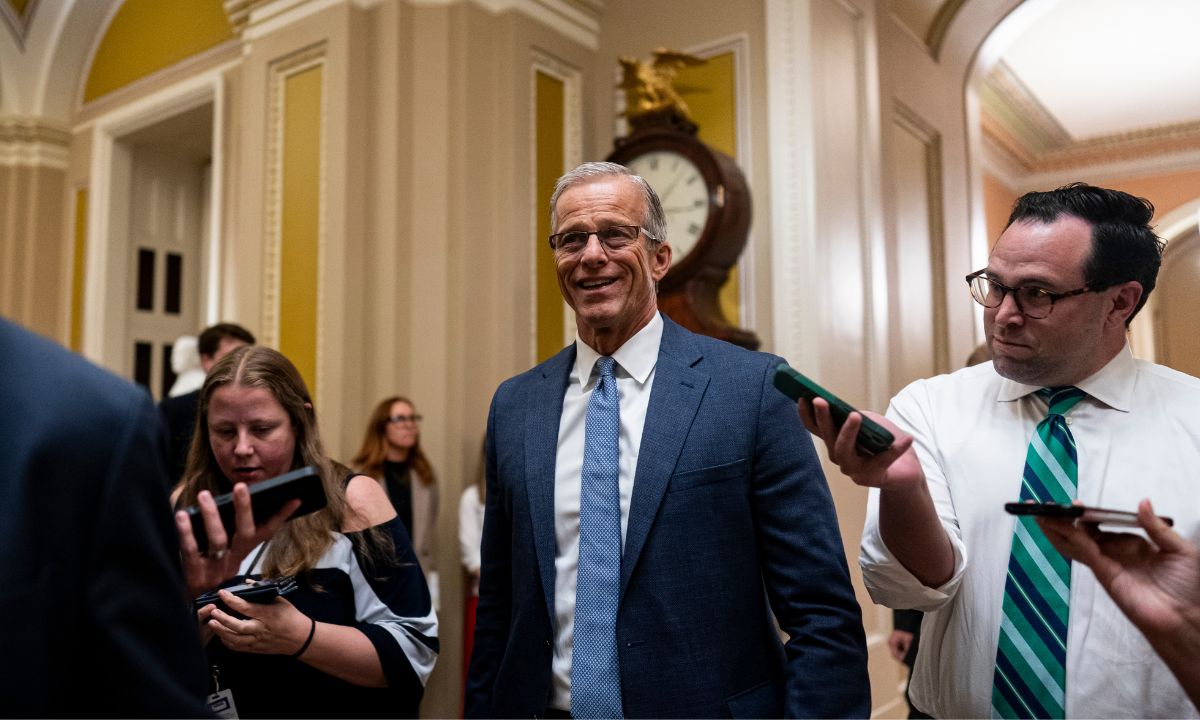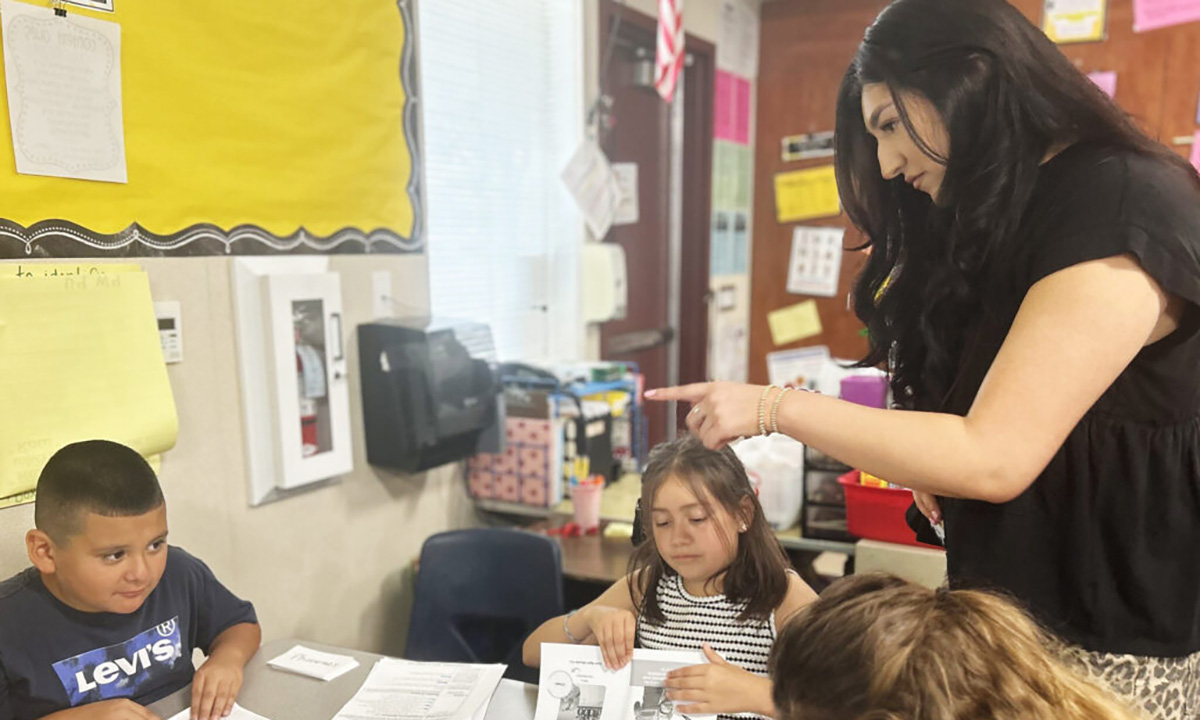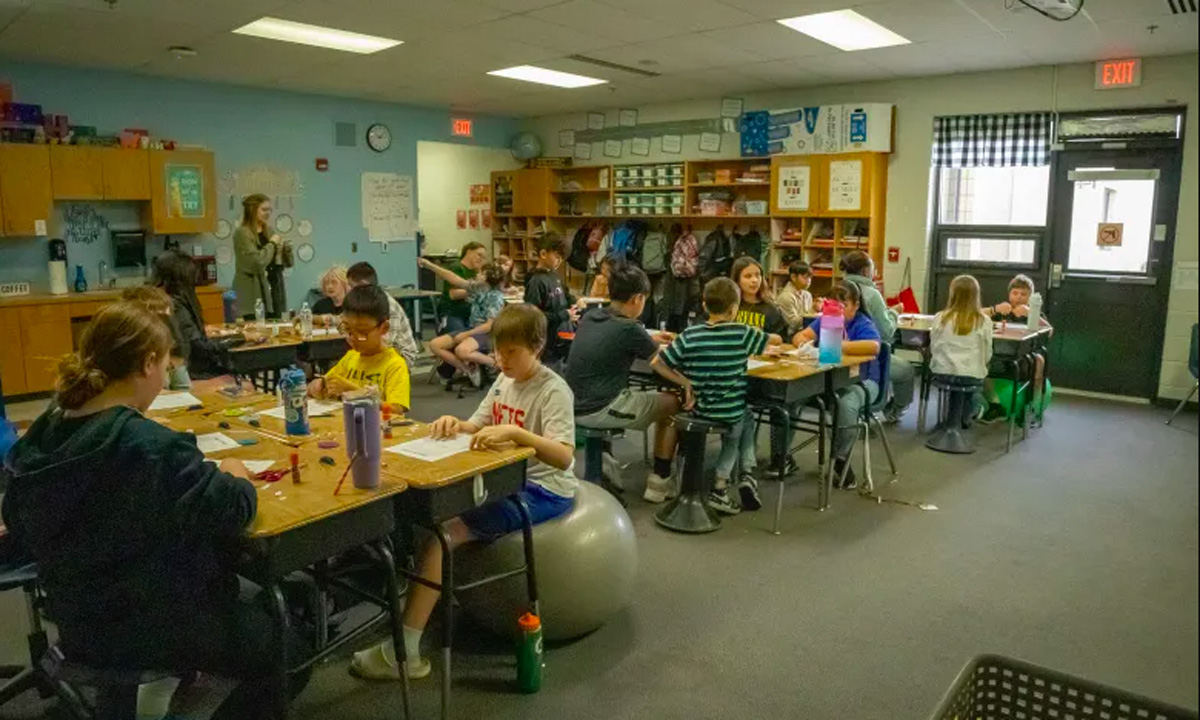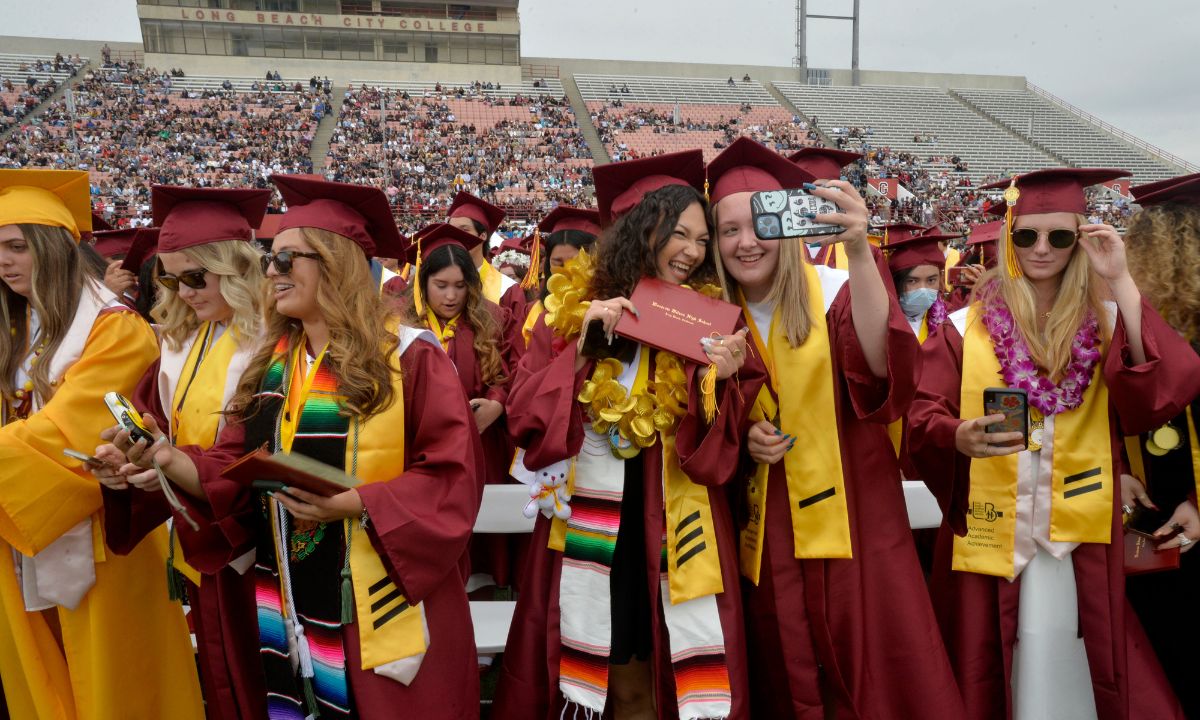As part of a big tax and spending plan that President Donald Trump hopes to sign by July 4, the Senate on Tuesday approved the country’s first federal tax credit scholarship program.
However, compared to the one school choice proponents have been pursuing since the first Trump administration, the provision is much more diluted. Currently, states have the option to opt in, which means that many states with a Democratic majority are unlikely to do so.
The Senate’s approval was hailed by Jim Blew, co-founder of the conservative think tank Defense of Freedom Institute, as a significant step in ensuring that every teacher and family in our nation has access to free education. However, he claimed that the limitations would make it extremely difficult to provide money to families that merely wish to send their kids to a better school.
House staff quickly started discussing the bill, and a vote is anticipated on Wednesday. How members will react to the updated choice plan is unknown, though.
For every dollar donated to scholarship organizations, the proposal provides a tax credit to the givers. Families are then given money by such groups to cover tuition at private schools and other educational costs. However, the Senate removes wording that would have barred any control over private schools and allows states a voice in which groups can participate, in contrast to the House’s more expansive proposal that was passed in late May. According to Joshua Cowen, a Michigan State University education professor and outspoken opponent of vouchers, that might be a significant issue of contention for House members.
He suggested that they might simply hold their nose and pass it. However, that would result in the most extensive government regulations on private and religious K–12 schools that we have ever seen.
After lawmakers spent the night working on Trump’s one big, beautiful bill, Texas Senator Ted Cruz, a longtime supporter of the Educational Choice for Children Act, spoke to the chamber early on Tuesday without bringing up the amendments.
He referred to school choice as the civil rights problem of the twenty-first century and stated that this tax credit provision will release billions of dollars annually for scholarships that will allow children to attend the K–12 school of their choice.
The new program may increase the national debt by at least $3 trillion by 2034 and is only a small portion of a legislative package that extends Trump’s 2017 tax cuts. In a party-line vote, Republicans passed the law with a trifecta in the White House and Congress. However, despite resistance from Republican Senators Susan Collins of Maine, Thom Tillis of North Carolina, and Rand Paul of Kentucky, Vice President J.D. Vance still had to break a 50-50 deadlock in the Senate.
Child tax credits and Trump accounts
The expansion of an existing $2,000 child tax credit is one of the legislation’s other child-related features. The Senate version raises the credit to $2,200, while the House version raises it to $2,500. A new feature called Trump Accounts would give kids a $1,000 investment fund that they might utilize for a home or college in the future.
Cuts and work requirements for Medicaid and low-income families’ food assistance programs are among of the most contentious measures. Children in rural areas, who are more likely to rely on Medicaid for medical care, may be most affected by the $1 trillion proposed cut to the program.
Senate Majority Leader John Thune stated on the Senate floor Monday morning that the changes increase the program’s effectiveness by focusing on those who are expected to get Medicaid benefits. However, ranking member of the finance committee and Democrat Ron Wyden of Oregon issued a warning: Children with disabilities will no longer receive health insurance.
Compared to the school choice provision, those provisions have sparked significantly more discussion among GOP lawmakers. However, after a Senate staffer declared Thursday that the bill could not fulfill reconciliation requirements and would need 60 votes to pass, Republicans made major revisions to that section. Republicans reduced the maximum amount a contributor may pay from 10% of their yearly income to $1,700, while still permitting government supervision.
It is much more difficult for [organizations] to find 1,000 donors in order to fund $1.7 million for scholarships, according to Blew. That was not done to assist families or pupils.
There are still many unanswered concerns regarding which families will gain the most from the program. While some current scholarship organizations focus their funding on low-income students, the government program does not have this criterion.
Families making almost half a million dollars might use the scholarships in higher-income areas because the measure sets eligibility at 300% of median income. There are worries that families who already have their children enrolled in private schools may be more likely to acquire a voucher because preference for the scholarships would also be given to pupils who received them the year before or to their siblings.
The director of the Brown Center on Education Policy at the left-leaning Brookings Institution, Jon Valant, stated that you can be a very wealthy family in a very wealthy neighborhood and yet qualify for [these] grants. Who can predict with certainty how things will turn out?
DeVos calls it a win
Advocates claim that the initiative will give children across the country access to private schools during a period of rising demand. For instance, in the first few hours after opening on May 15, Tennessee’s recently expanded voucher program received almost 33,000 applications, causing technical issues.
Critics contend that the initiative would finance tuition at institutions that discriminate against students and allow contributors to evade taxes.
According to Cowan, the House version forces vouchers into states that have rejected them since 2000, such as Michigan. During Trump’s first term as education secretary, Michigan billionaire Betsy DeVos pushed a similar federal proposal, but she was unable to get a voucher initiative on the ballot in 2023.Last November, voters in Kentucky and Colorado rejected private school choice measures, and in 2024, lawmakers in Nebraska revoked a program that was established by the state’s legislature.
In different statesJudges in Utah, South Carolina, and Ohio have declared that voucher systems are illegal.
DeVos struck a triumphal note on Tuesday, referring to the Senate vote as a significant victory for families and children on X.
The decision, according to Cowan, would not grant the former secretary her long-sought objective of utilizing the tax code to compel vouchers into the states and would allow state governors and possibly [education] agencies the power to refuse.
Although she had nothing to say about the bill’s school choice component, Education Secretary Linda McMahon supported a clause that caps college student loan debt.
The lack of private schools in rural areas is a common argument used by opponents of vouchers.More than 60% of children in metropolitan areas live within two miles of a private school, compared to only 25% of students in rural regions, according to data analysis by the metropolitan Institute.
The number of families who apply and the level of the scholarships will determine how many participate in the new program. According to Colyn Ritter, a senior research analyst at the advocacy group EdChoice, new voucher programs have historically had poor take-up rates.
More families may apply for scholarships if they are substantial enough to pay for the full cost of attendance at some private schools, which averages around $12,000 across the country, according to Ritter. However, that sum would not cover the cost of more upscale Northeastern schools.
According to him, if scholarship grants are as low as $2,500, it might provide a tuition reduction for families that can afford it, but it wouldn’t be sufficient to give a family in poverty the option of attending private school.
The scholarships might be used by families to cover curriculum, educational therapies, and tutoring expenses associated with homeschooling. Ritter, however, described homeschoolers as a community that is unpredictable. The population’s political and racial diversity has increased. Many homeschoolers are still wary of government-run programs, but others could be early adopters of the new money, he added.
Faith Howe, president of Texans for Homeschool Freedom, stated, “We just want to make sure that there are no strings attached and that we won’t end up in some government database that can track us and tell us what to do in the future.”
One of the NGOs that would probably take part in the scheme is the Children’s Scholarship Fund in New York. The group has affiliates in 23 states, including several blue states, that are closely watching negotiations over the final wording, said spokeswoman Elizabeth Toomey.
The new law may be used to extend the tiny homeschool pilot program that her organization is running. The ClassWallet platform presently provides forty families with $1,000 to spend on authorized expenses, similar to how many state school savings accounts function. But the group s core mission, Toomey said, is awarding roughly 7,000 scholarships each year to students from low-income families across New York City.
Recipients receive, on average, about $2,500 toward tuition, but Toomey said the new federal program would allow the organization to increase the award and serve more families. She acknowledged that a scholarship might not help the poorest of the poor, but has helped push many families into a position where they can afford private school.









